After ordering the cheapest (wrist-type) blood pressure monitor I could find online (around 10$) to see how it performs in comparison to a “regular one”, I got a nice surprise.
I’ve hooked up a logic analyzer to as many testpoints on its PCB as possible and found out that it has a UART interface on board!! How convenient is that?
This ABP hack has proven to be quite impractical after all, although many people have shown interest in this this project and contacted me as it’s quite useful to have access to your blood pressure data and almost no open source blood pressure monitor projects exist.
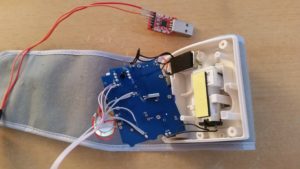
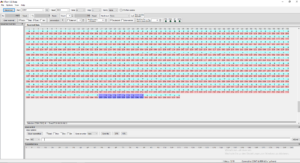
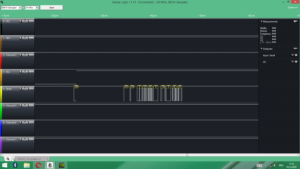
A sequence of bytes is sent from testpoint “P6” which turns out to be UART TXD @9600 baud 8N1. You can hook up ANY microcontroller to that and harvest the data easily. After a measurement is complete and successful, the device keeps sending the same byte sequence over and over again until powerdown.
This sequence is the one you see on the pictures: 255 – 254 – 008 – x – x – 0 – Syst. RR low byte – Syst. RR high byte – Diast. RR – heart rate. As you can see the last 4 bytes of the frame is our desired data. For the systolic pressure we seem to require 2 bytes because 255 is apparently not enough. Sad but true 🙂 , then comes the diastolic pressure and finally the heart rate. The frame starts with 3 fixed bytes (255, 254 and 008 in decimal), followed by 2 variable bytes (haven’t figured out what those are for yet) and a zero byte followed by the data.
Throughout the measurement process itself constantly pressure data is streamed via UART. Each data packet begins with a ‘254’ (DEC) byte followed by one “cuff pressure” byte and one byte that represents the pulse oscillation. Here’s what the data of one measuring cycle looks like if plotted over time:
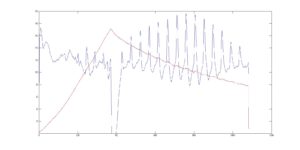
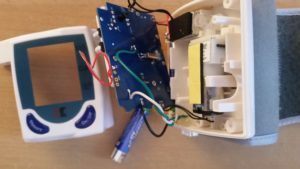
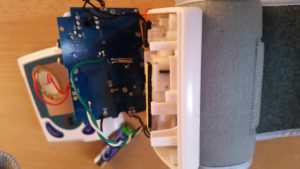
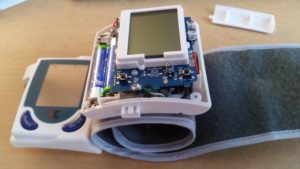
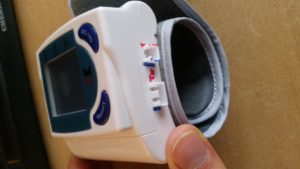
2 JST connectors were inserted into the enclosure. The 3 pin one gives you access to GND, the ON/OFF/START button to remotely trigger the device (just has to be pulled to GND) and finally to the TXD pin of the device. The 2 pin one is simply connected to the battery terminals to eliminate the need for batteries and power the thing from an external source.
Just look online for sphyngomanometers of similar appearance if you want to hack one too. This one has “CK” as a logo, but there are models around from different brands that look the same enclosure-wise. The exact model name of this device is “CK-101”
These devices perform reproducible values but you have to make sure to keep your wrist at heart level, as otherwise the values vary extremely. There is also literature that suggests that the wrist-type sphyngomanometers overestimate blood pressure because of distinct anatomical properties of the wrist arteries (https://www.ncbi.nlm.nih.gov/pubmed/15096904).
One application for an automatically triggered wrist sphyngomanometer I can think of is automated sleep measurement because during sleep your wrist is roughly at heart level anyway.
